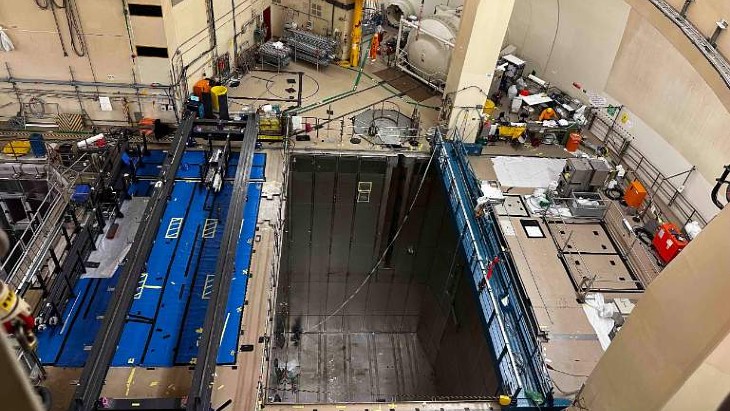PreussenElektra said that the latest landmark moment meant the plant was now at the "free of water" stage of decommissioning.
The next stage of the project is dismantling the 400-tonne reactor pressure vessel, which is due to begin in November and take around eight months to complete.
Plant manager of Grafenrheinfeld (KKG), Bernd Kaiser, said: "With this milestone, we have now managed almost half of the nuclear dismantling of the KKG. I am proud of the great achievement of my dismantling team and look forward to tackling the next dismantling projects together with them."
The 1275 MWe (net) pressurised water reactor achieved first criticality in December 1981 and was connected to the grid in the same month. It entered commercial operation in June 1982.
In August 2011, the 13th amendment of the Nuclear Power Act came into effect, which underlined the political will to phase out nuclear power in Germany. As a result, eight units were closed down immediately: EnBW’s Phillipsburg 1 and Neckarwestheim 1; EOn's Isar 1 and Unterweser; RWE's Biblis A and B and Vattenfall's Brunsbüttel and Krümmel. As part of the 13th amendment to Germany's Nuclear Power Act, Grafenrheinfeld lost its authorisation for power operation and was finally shut down on 27 June 2015.
PreussenElektra applied for the decommissioning and first dismantling permit in 2014 and received it in 2018. In this first approval procedure, the company described in detail the concept for the entire dismantling of the system and the measures planned for this. PreussenElektra split the application for the individual dismantling scopes into two steps. The dismantling of the plant began in April 2018 with the granting of the decommissioning and dismantling permit. The second dismantling permit, which was granted in December 2022, for which the application was submitted in December 2019, includes the dismantling of the reactor pressure vessel and the biological shield surrounding it.
Since dismantling began at KKG, the fuel elements have been removed from the plant, more than 12,100 components have been removed and around 3100 tonnes of material have been dismantled. This material has been dismantled, cleaned and measured several times in the waste treatment centre. The internals of the reactor pressure vessel were already completely removed as part of the first dismantling permit.





_23621.jpg)

_63865.jpg)
_18570.jpg)





